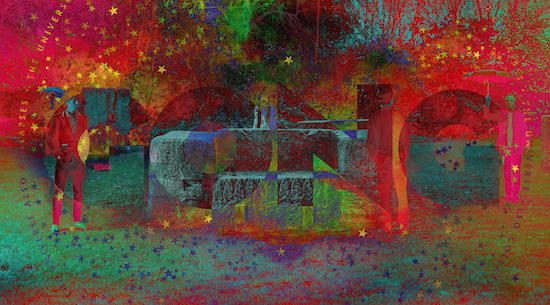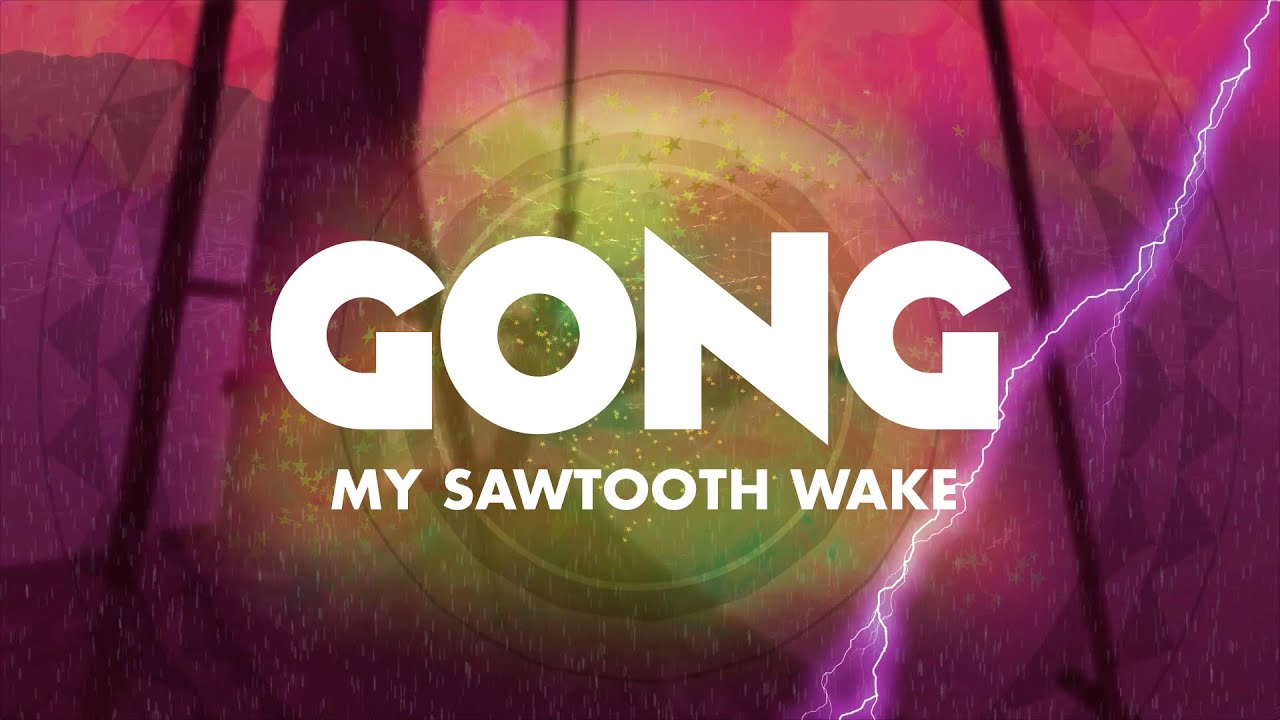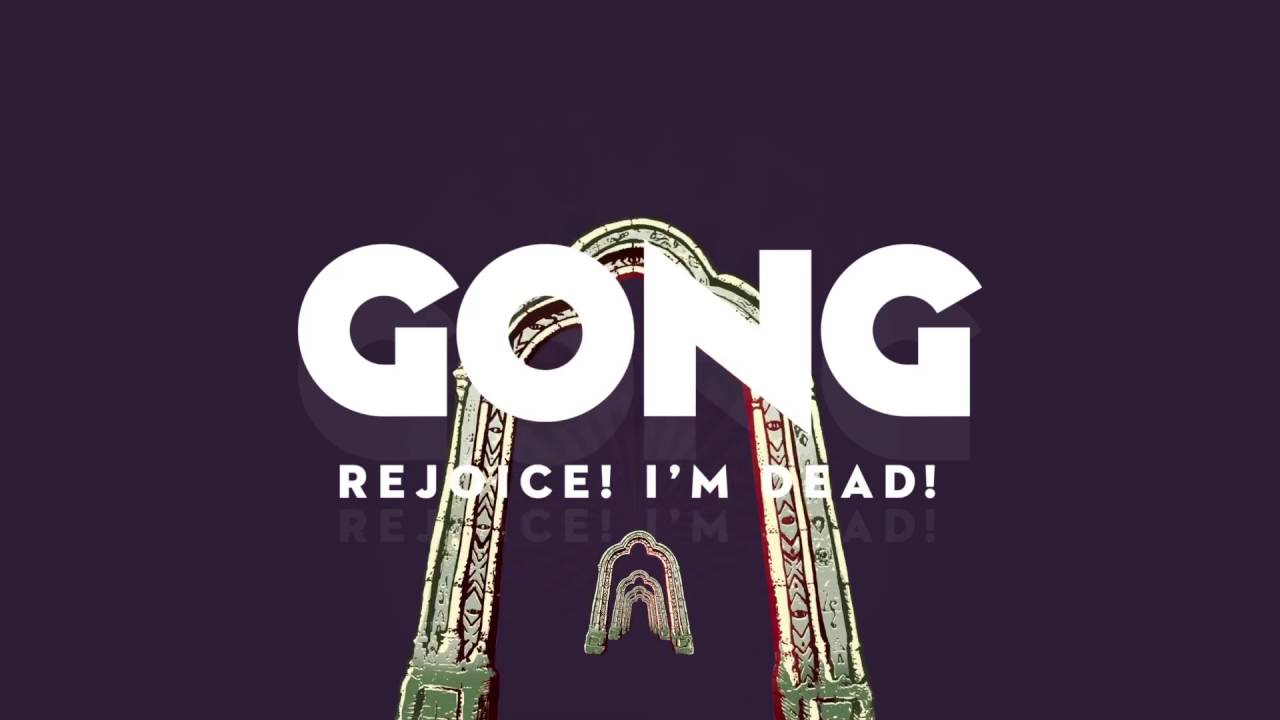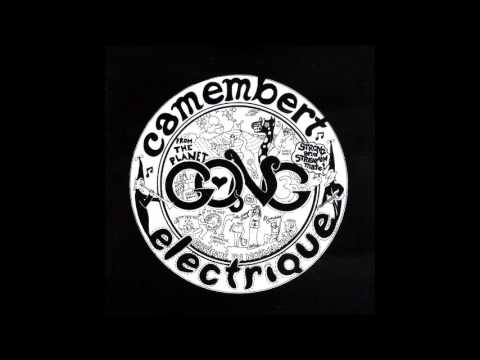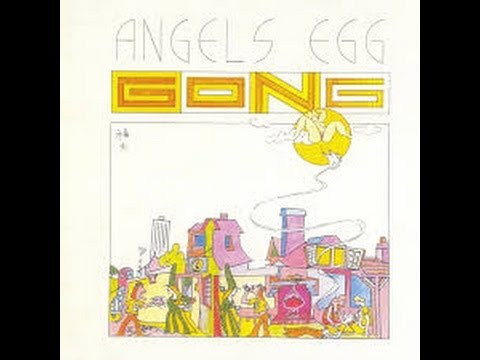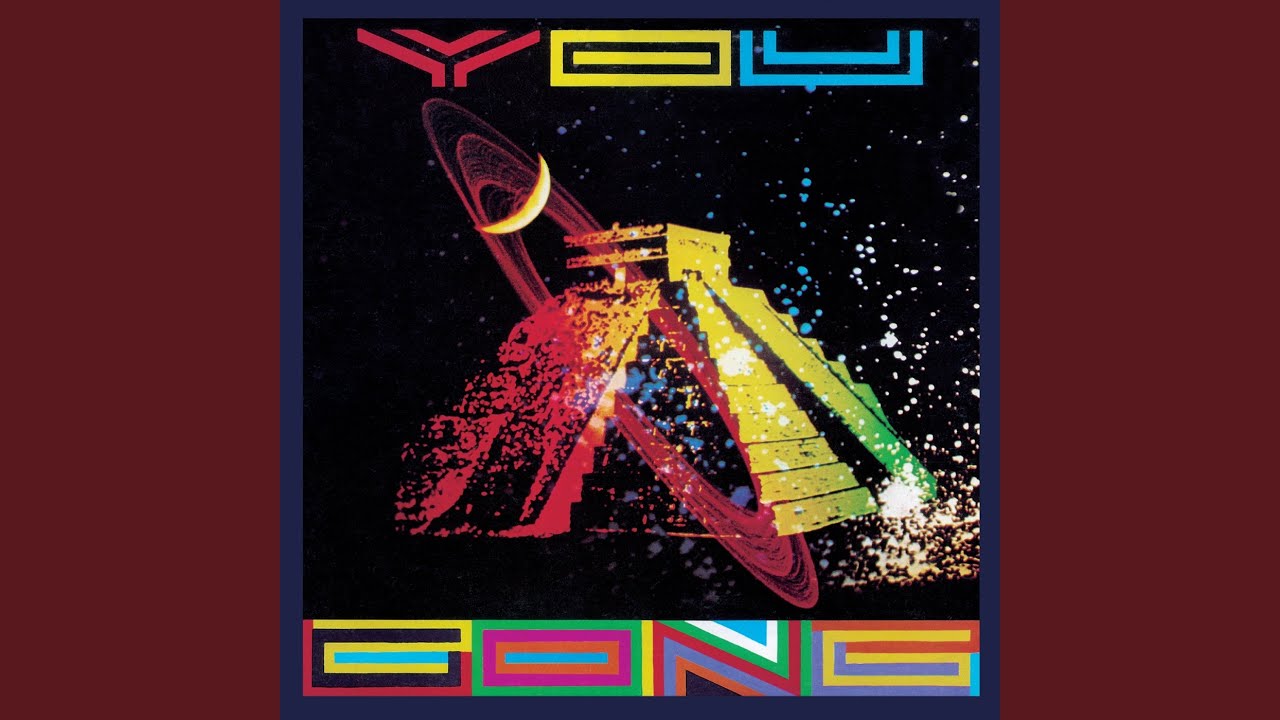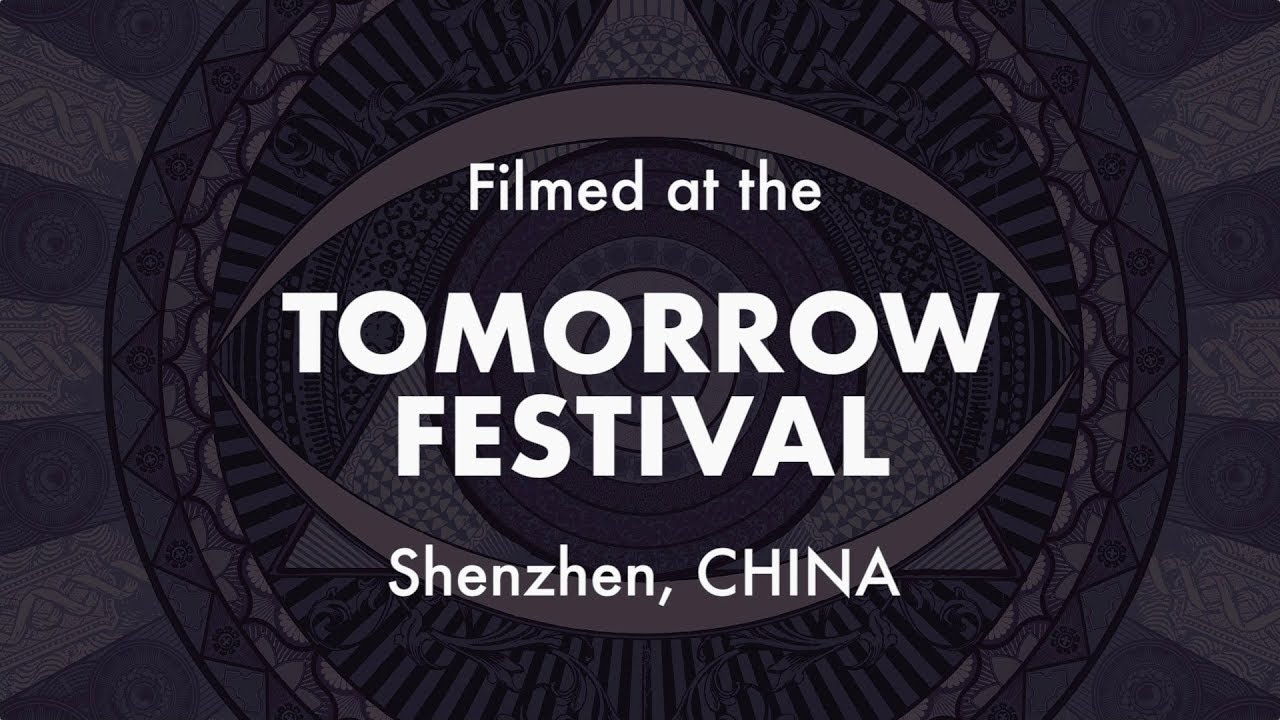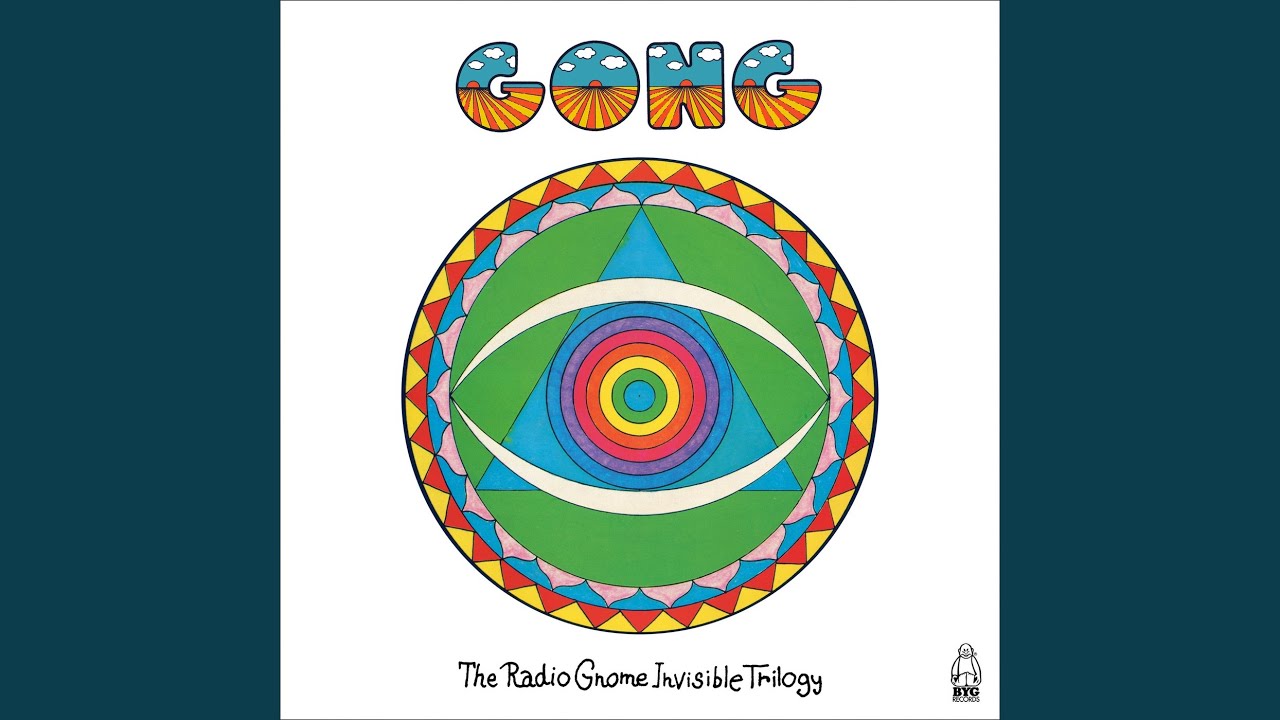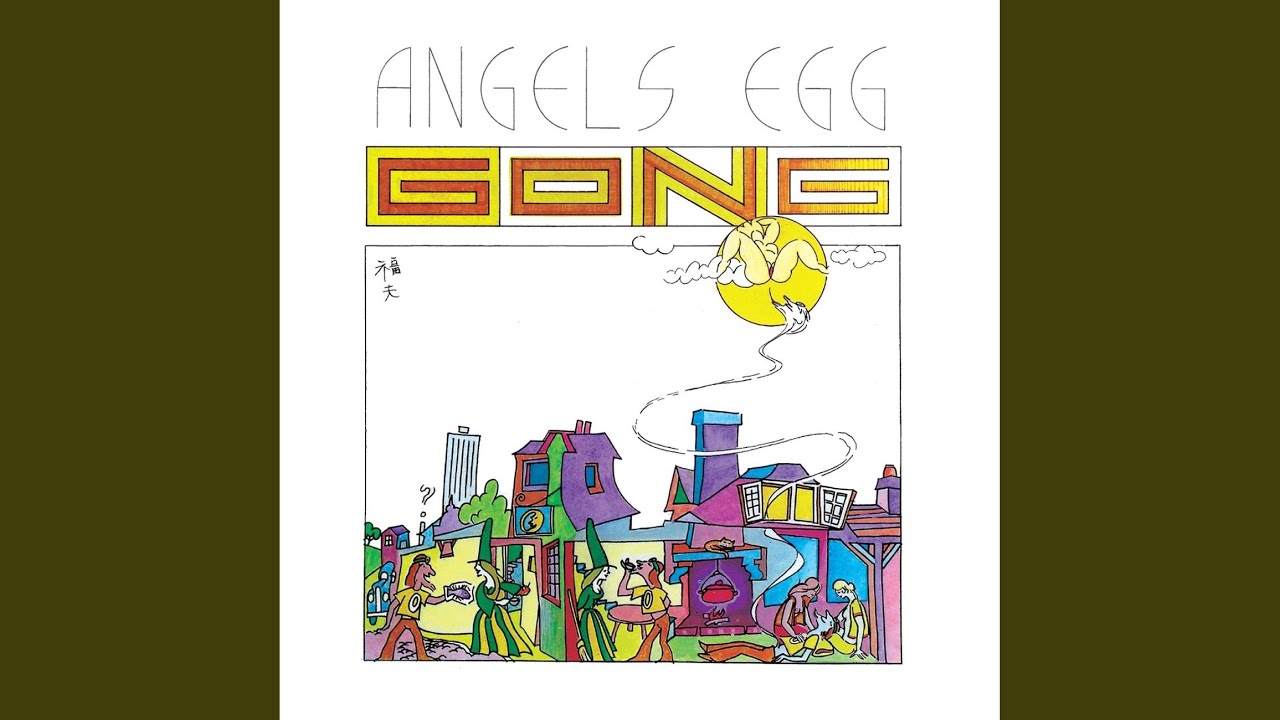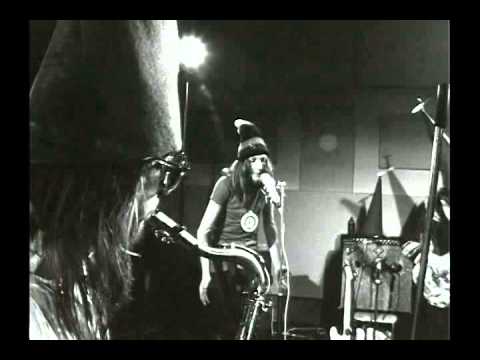Formed in Paris in 1967 by Daevid Allen and Gilli Smyth, and graced by a succession of over 50 highly accomplished musicians throughout its many incarnations, the psychedelic rock group Gong had begun to transcend the limitations of being simply a ‘band’ long before the death of its founder in 2015. Allen always insisted that Gong was his idea, rather than his band, and when he wrote to the remaining members prior to his death, expressing his wish that they continue with new recruit Kavus Torabi as frontman, that idea refused to die with him.
Co-founder of the Wilde Flowers and the Soft Machine, prolific solo-artist, performer and beat poet, Allen was present during the 1968 Paris protests, met and was inspired by William Burroughs, and in many ways was the archetypal free-spirited anarchist artist who himself was a catalyst for countless other creatives. The often bewildering, humorous (though not comedic), cosmic mythologising of the Gong universe has sometimes led to his unfair pigeonholing as a new-age hippy, but Allen’s music is far more than that.
The multi-faceted aspects of Gong’s incarnations, not to mention the vast array of solo albums he released, invented more genres of music than any attempt at a reductive description can possibly allude to. In an obituary for the Guardian on 2 March, 2015, Everett True described his music as: “Like Sun Ra meets Vivian Stanshall meets DIY punk… Except when it isn’t”.
Now, with the release of their excellent second post-Allen album, The Universe Also Collapses, the current incarnation of the band have taken a further decisive step in justifying their continuation of the mission entrusted to them by its founder. With such notable past members as Steve Hillage, Mike Howlett and Didier Malherbe giving their stamp of approval to the current line-up after witnessing their mighty live prowess, it has become difficult to argue against the validity of their continuation without Allen. A more convincing justification still, for any who may require it, can be gained by attending any of their upcoming live performances.
TQ spoke to bassist Dave Sturt and guitarist and vocalist Kavus Torabi, about the relationship between the current band and the legendary name it carries, providing some points of entry into the world of Gong.
Gong 2019 – Continuing the legacy
Kavus Torabi: For us, it’s never really been a legacy band, it’s more of a continuation. I can’t suppose for one moment what Gong represents to all of those people who know about it, I can’t even suppose what Gong means to people in the band. All I can know is what Gong means to me and how central its influence is to my being a musician. For me it was always about the way that all of us write songs and the way that we approach music. We’re applying this to Gong but we’re not trying to ape what Gong did in the past. I think we’ve all been affected enough by Gong for it to be in our DNA and for it to be a way of operating that we’re doing new music in that framework. That’s why we haven’t got a keyboard player and why we haven’t got someone doing space whisper, because we’re not trying to be like a tribute version of the old Gong and we’re not trying to play the old songs the way that Gong used to play them.
Dave Sturt: The strange thing is, I’ve been in the band since 2009, and in some ways with Daevid it felt like more of a legacy band then than it does now. I think he felt trapped in some ways. He wanted it to be more out there and yet he felt that he needed to play that character all of the time. I think he wanted to be much more avant garde, much more pushing the boundaries, as he always did throughout his earlier career. To a certain extent he was doing that, but not I think as much as he wanted to, and I don’t think he knew quite how to do it. When he met Kavus, I think a light went on in his head and he thought that this was a way that could work, but then he didn’t live long enough to be a part of it.
KT: And here’s something for the record – the current line-up of Gong now is the longest stable line-up the band has ever had. I don’t think there’s even two records that have had the same personnel.
Rejoice! I’m Dead (2016) – Life After Daevid
DS: We were still trying to find our feet and still felt obliged to reflect Daevid’s life and death. Of course, the whole time we were doing it, there was a sense of, “What are Gong fans going to think of this?” The title comes from a poem of Daevid’s, which he wrote a long time ago. ‘Rejoice, I’m Dead’, was one of the lines. Initially when we were thinking about that album, we were thinking we could use some lyrics that Daevid had written, so I opened the poetry book and that was the first thing in it, and that ended up being the only line we took.
KT: Outside of the people who are hardcore Gong fans, I think Daevid has been unfairly overlooked, so we really felt that we had to make something special to celebrate his death. We knew we wanted to make the album about Daevid’s passing – a positive death album. Daevid walked into that death beatifically. There’s a video on YouTube with Daevid about two weeks before he died, in Byron Bay where he lived, and he’s reading out from The Prophet by Kahil Gibran. His hair was really short because of the chemo and he just has this absolutely glowing, smiling face as he reads this poem about death. We’d already had the emails from him, saying, "Guys this is it, I’m not taking another course. I’m a big believer in what will be will be. And so, I’m walking in to this now. I’m letting go.” The fact that he’d said so much stuff in his life about death and what happens beyond that, it would have been so bogus if Daevid had been this terrified, shrivelled old man, but he wasn’t – he walked into death with his arms open and a smile on his face and that was because the guy was the absolute real deal. We knew that if we wanted this band to continue, not as a legacy but as our band, us five guys being Gong, we had to make a good record to prove it. Then we spent the next two years touring it, always talking about how we could make the next album better.
‘You Can’t Kill Me’ – Camembert Electrique (1971)
KT: The opening track on Camembert Electrique, ‘You Can’t Kill Me’, has become our anthem. It’s become now about how you can’t kill Gong. It’s a rallying cry, a very special song to play. The way we do it, you’ve got the first two verses and choruses and then you’re into a section of improvising, which could last anything from two to 12 minutes, and then we’re back. In those minutes of improvising, you get to check out what the audience is like – are they into it, and you get to hear how each other band member sounds as well. Often we would get more and more atonal and interesting as the tour went on. The first few days we’d be in territories we knew, then each night the improvised section of that opening song would get more and more bizarre until, I remember we were doing a gig in Germany and we’d only been onstage five minutes and we were already almost at the point of playing where you could actually hear a pin drop. You can tell the kind of gig it’s going to be, from that improvised section. Having come through groups like Cardiacs and Monsoon Bassoon that were extremely rigid and rehearsal intensive, to be able to be just in front of a few hundred people and having to just work with what you can hear of what each other is doing is really exciting, and that sets up the gig beautifully.
DS: That’s one of the great things about Gong from all eras, or certainly from the early eras, the fact that they had such complicated sections and yet you could tell that there were parts where they were totally making it up as they went along. Having that combination of freedom and discipline was really important. It was much more strict the first few years I was doing it though. It’s only since this band developed that it’s become freer.
‘Selene’ – Camembert Electrique (1971) and Angel’s Egg (1973)
KT: When we first got this band together, we were pretty much playing everything from Camembert. In a way still, it’s the purest hit of Gong. That record’s got everything – I think it’s really one of the great rock records. The track ‘Selene’ is basically an evocation of the moon goddess. I always loved that melody and again, it’s a real point in the set where it just feels like everything is pulsing and thrumming. It’s a weird one to get right, because it’s not a difficult song to play in a technical sense, but when it’s right it’s total magic.
For me it’s one of those ones we could never drop from the set because it’s one of those moments of complete connection with an audience. The version on Camembert is brilliant, but how how it’s performed each night really does depend on the audience and the vibe.
DS: You really bare your soul for that one. I mean, it could go horribly wrong. It never has, it’s always worked out in some way. It was the same with Daevid. Some nights, he was so on it, that his pitching was just perfect, it was spine tingling.
‘Master Builder’ (The ‘Om Riff’) – You (1974)
DS: ‘Master Builder’ has to be the track that has influenced more bands over the years than anything else Gong did. Such a great riff that Steve Hillage used it twice [laughs].
KT: For me, it’s the greatest riff ever written. As long as I’m drawing breath, there will never be a Gong gig where we don’t play it. There have been some really good ones, but nothing comes close to that. To get to play that every night is just an absolute joy. I don’t know where it came from or how it was written. I genuinely think that music is the highest, the most psychedelic of all the arts, because music lights up a circuit in the brain that I think is only otherwise lit up by psychedelics or maybe by the experience of dying.
DS: This has been proved now, hasn’t it, with brain scans. You can see parts of the brain lighting up in response.
KT: All music is psychedelic music in an sense. When you create music, it’s like you’re building some architectural temple in another dimension. For whatever reason, this limited bandwidth that our ears are able to hear through the hammers against our ear drums, by sculpting these sound waves and putting them into an order, it turns on this circuit – and none more for me than the ‘Om Riff’. It always becomes the pivotal point in the set, when it becomes inarguable that we are not fucking around. The version that we do now is 15 minutes long. All the versions of it are brilliant. The original on You, is incredible, as is the version that Steve did as ‘The Glorious Om Riff’ on Green. It’s absolute magick, with a k on the end – there’s no other word for it.
DS: Kavus brought in that whole introduction section. It does go on longer than you expect, just teasing for a long time. At first you think, is this going to work? I was really interested to hear what Steve Hillage would think of it, because it’s his tune. Then he guested with us the first time when we did it in Oslo and he really got it. It feels a lot more dynamic now, obviously with Cheb [Nettles] on drums, everything is louder and more dynamic. When you’ve got a drummer like that, you can relax and know it’s going to be superb.
The Tomorrow Festival in Shenzhen, China 2018
KT: My first ever gig with Gong – talk about trial by fire – was in front of 5,000 people at Psicodalia in Brazil, which was incredible. The one in China though, was the gig of a lifetime. I’d say 70% or more of the audience were under 30 and there was this full-on camera set up, seven or eight cameras filming us for the whole gig. Then when we came off stage, one of the organisers came up and told us that half a million people had just watched it live streaming over the internet. The audience were all singing along with the new stuff from Rejoice! I’m Dead. Whatever idea I had about China – I understand Shenzhen’s not indicative of all China – but it was a reminder, if I needed one, that it’s only governments that are arseholes, the whole world over, people are just really nice and want to enjoy themselves. I think we might have been the first out-and-out psychedelic band with a full-on light show to play there.
DS: The photograph of us on the new album is from that gig.
‘Isle Of Everywhere’ – You (1974)
DS: This is the track that made me want to be in the band. The band always use working titles – ‘Cycle Glyphs’ is what they called it. Like we call ‘Master Builder’ ‘The Om Riff’. When I first heard ‘Isle Of Everywhere’, I had no idea what was going on. It’s just instrumental, but it’s a lovely spacey track that you think you’re comfortable with and then it shifts in a way that you don’t quite understand. It’s challenging as well as engaging. I always loved listening to it, back in the day, before I was really playing. Then when I joined the band, that was in the set, so I had to learn it for my audition. I just couldn’t believe how complicated it is. It starts in 8/8 and then goes into 7/8, then 6/8, then back to 8/8. Which doesn’t sound that complicated but when you’re playing a riff for like three minutes and then suddenly it shifts by one semi-quaver, it really messes with your head, and while that’s going on there’s a cycle going through over every time signature. It seems a lot more complicated than it seems when you’re just listening to it. When I first played it, ten times I think I played it, the sweat was just pouring down my back. If you fuck up then you can’t find you’re way back into it again. Theo Travis, who was the sax player in the band for ten years, and is now a member of King Crimson, as of last week, was my way in. I knew Theo from when I was in my twenties, and Mike Howlett was leaving to live in Australia that year, so they needed a new bass player. Theo put up three bass players he knew, at the beginning of 2009.
‘Love Is How Y Make It’ – Angel’s Egg (1973)
KT: If I had to pick a track that was my way in, it would be ‘Love Is How Y Make It”, from Angel’s Egg. Dan Chudley [songwriting partner from Monsoon Bassoon] gave me a cassette with Angel’s Egg on one side and Flying Teapot on the other. I spent about three or four days listening to that tape and it joined up all the dots. I started to see how Gong, Henry Cow, Cardiacs, Captain Beefheart, Steve Reich, Stravinsky, even the stuff that was around at the time like Mercury Rev and My Bloody Valentine, was all the same thing – psychedelic music. I had an epiphany that this was the road I had to be on. Whatever it is that these guys were doing, this was the language that I understood. It’s not as cool a language as the Velvet Underground, who I also like, or Eno, but I get what these guys are doing. Even later when I heard Sun Ra and John Zorn, I realised it was all the same. Fellow travellers of what I call ‘the bent path’. I realised that I was one of these people.
DS: The music for that piece was written by Pierre Moerlen and he was a classical percussionist when he joined the band, he wasn’t a drummer. He was learning drums when he joined Gong. Steve Hillage was telling me about this just the other day. About working with him and Mike Howlett and getting him to loosen up a little bit. Of course, he became one of the greatest drummers ever.
‘Never Glid Before’ – Paris 1973
KT: This film is a good reminder of how good we have to be. I think it was performed in Paris in a rehearsal studio. It’s got all the mystery and magic of Gong and it’s just such a kick ass performance. It’s one of my favourite tunes – we still play it. All the classic members are there, apart from Gilli. You’ve got Mike Howlett, Tim Blake, Pierre Moerlen, Daevid, Steve Hillage, Didier Malherbe and they’re just absolutely killing it. Daevid’s got his telecaster in the background but he’s not playing it. He’s being totally Daevid, like no one else can be. He’s both the antithesis of cool and yet so at one with himself, he looks amazing. He doesn’t look like he’s doing some stage school theatrical bullshit, he’s channelling it. They’re definitely all playing in the moment on that. I think it’s better than the album version. I only saw that for the first time three or four years ago, I think it just popped up on YouTube.
DS: It’s interesting to see how free he was and how uncool in some ways. I mean, it takes a lot of confidence to be the fool, the cosmic joker. Whenever we were touring, he’d be the one walking through the airport with his red top hat and jacket. He didn’t hide away, he was always on show.
KT: One of the things I’ve taken from Daevid is, he was cool about being vain. I’ve always been a bit vain and I think if you’re going to front a band, you’ve got to be. I always used to try and play it down a bit, but Daevid taught me it was ok, that you could be completely enlightened and a bit vain as well.
The Universe Also Collapses (2019)
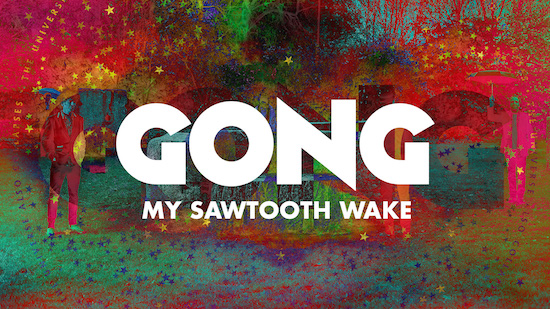
DS: This album felt much more focused. One of the great things about doing this album is that Kavus has been on such a high from the very first, with a vision to push this through in a certain direction.
KT: One thing was that we desperately wanted, was to all be in the studio at the same time together, like in the old days, not a dialling it in remotely. We did everything together in the studio and all sat there when we did takes and it sounds like it. It was great to record with Frank Bing, the drummer who plays in This Is Not This Heat and Prescott. He’s a really good recording engineer, he really gets Gong and he did a wonderful job in the mix. We had decided, collectively, that we wanted to make a psychedelic rock record – we didn’t want to make a prog album or a jazz album. Obviously with Gong there’s always going to be a proggy, jazzy element, but we talked about how we wanted to make it really propulsive and upward moving – constantly pointing in one direction. There could be changes – the arrow could be changing colour, but it was always going in the same direction. The time signature, for instance, in the first track ‘Forever Reoccuring’ never breaks this 15/8 cycle, it’s constantly divisible by that. Ian, the sax player, was very keen on being maths monitor and had to make sure that everything we did fitted.
DS: We kept on saying: “But Ian, we can’t be beholden to that, if the music wants to go somewhere else, that’s where we’re going.” But in the end, it turned out spot on anyway.
KT: ‘My Sawtooth Wake’, again is one riff. That’s the one we’re really looking forward to playing live. In one way, we are kind of outliers in what may end up becoming something far more common, and that is to be a band with no original members. Daevid was always very clear that Gong was his idea, rather than his band. It was just this idea being re-perpetuated. I mean, by the mid-70s there were no original members of the band left anyway – we’ve got previous in this. In one sense, the odds are stacked up against Gong anyway, because outside of Gong fans, they’ve got a pretty ropey reputation, wrongly, as this comedic, new-age hippy thing. So I think we knew we were going to get into something kind of tricky that could potentially go really badly. I mean, who wants to be “that prick fronting the bogus, wrong Gong”? We realised, not only have we got a name that carries a great deal of baggage, but we’re now operating this craft with no original members. However, it sounds amazing, and we’d be kidding ourselves if we didn’t think that. I’ve been involved in so many bands in my life and it’s so rare that you get a chemistry like this. Given that, we realised that we had to look at it not from the negative side, that we’ve been blessed by having this platform to operate on. It means we get to do shows with a really amazing lightshow and really good sound and we can get to play these kick ass versions of these totally cosmic riffs and do our music, which is very much in keeping with what this whole message is about.
DS: The last thing Daevid said to us was: ‘At last I am free to let go of it so now it is up to you guys to carry it on into new unknown heights and depths far beyond anything I could ever imagine myself.’ Which is such an amazing thing for him to say, just before he died, and it’s exactly what happened. This is where we’ve taken it.

